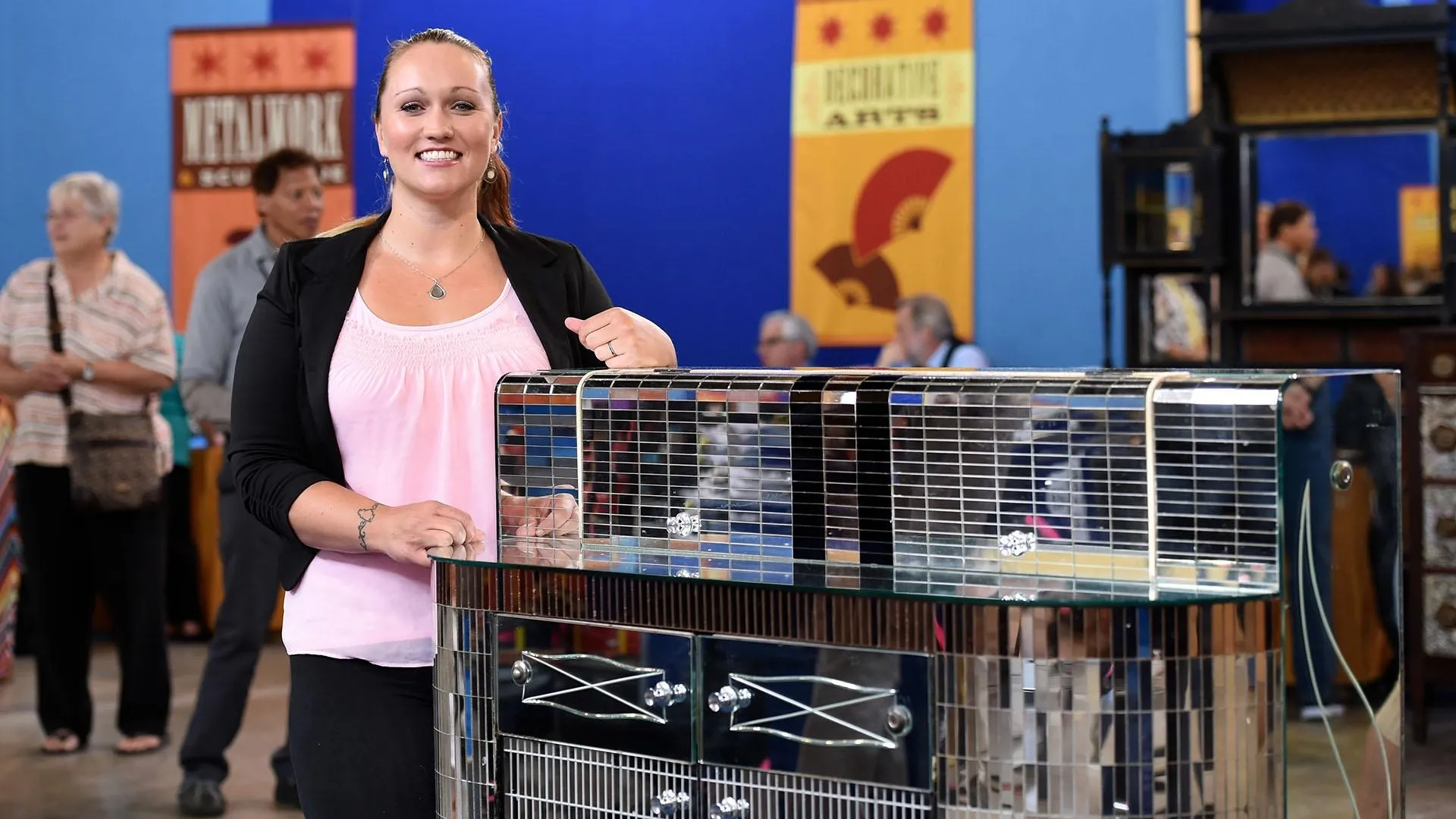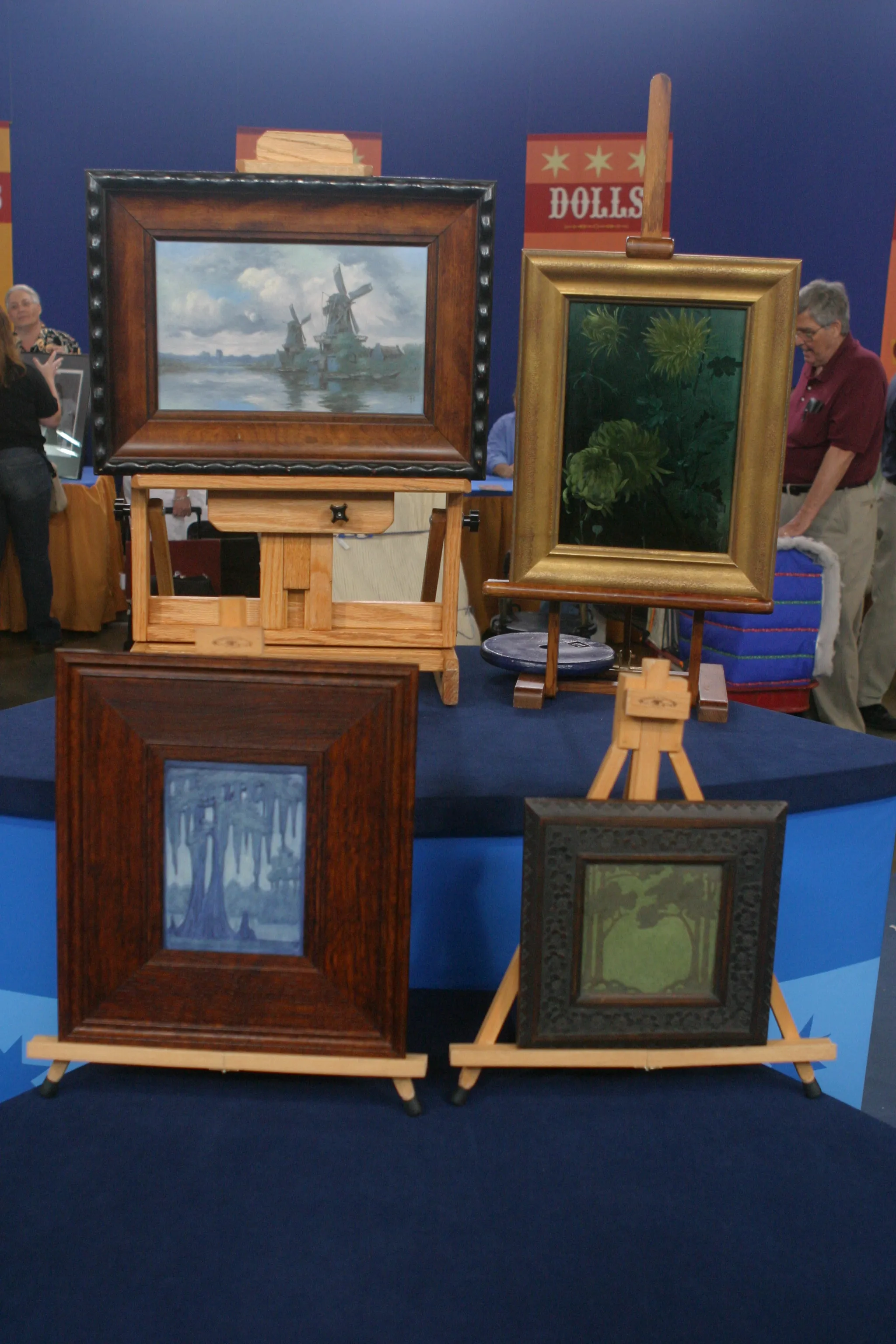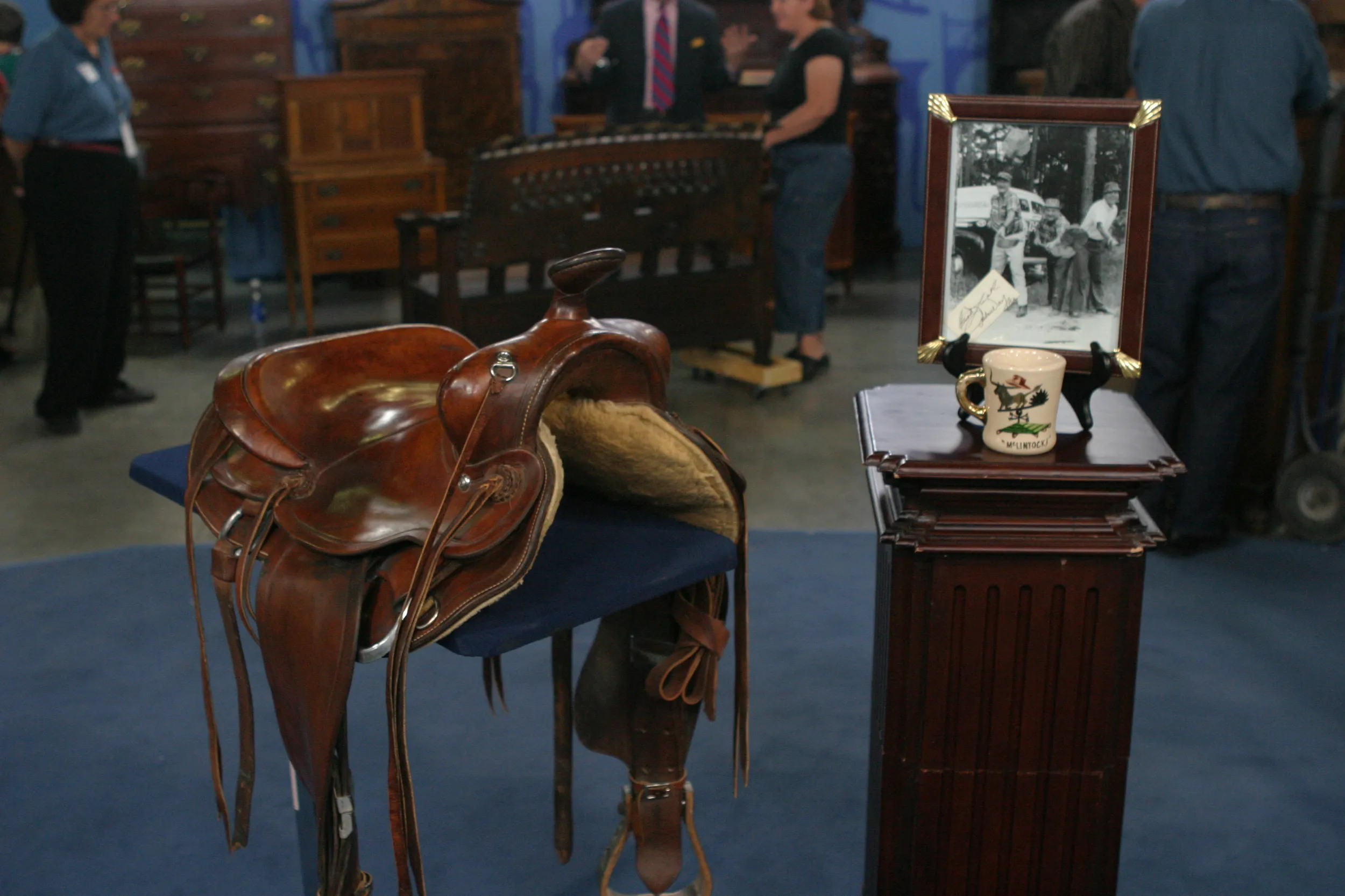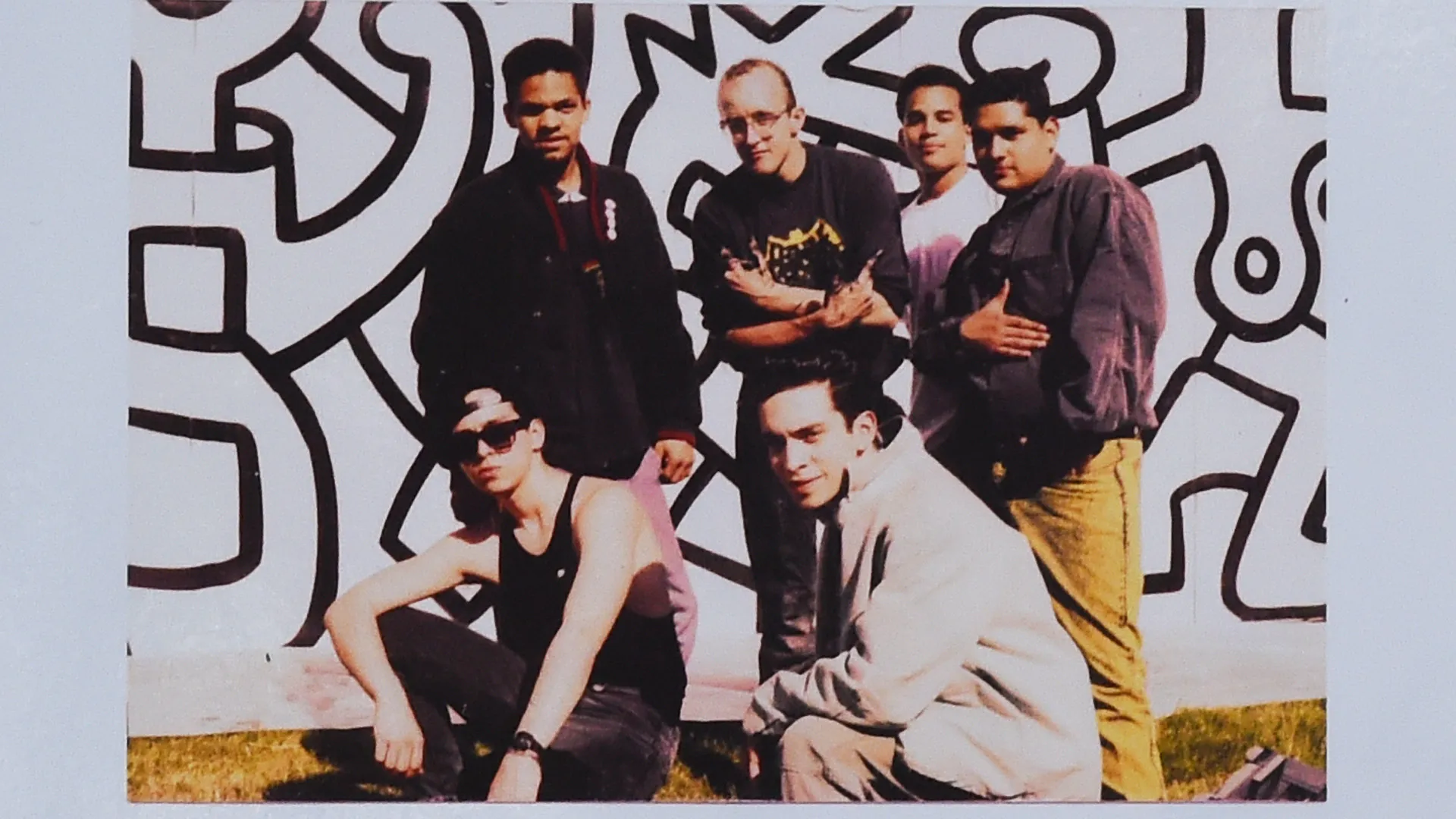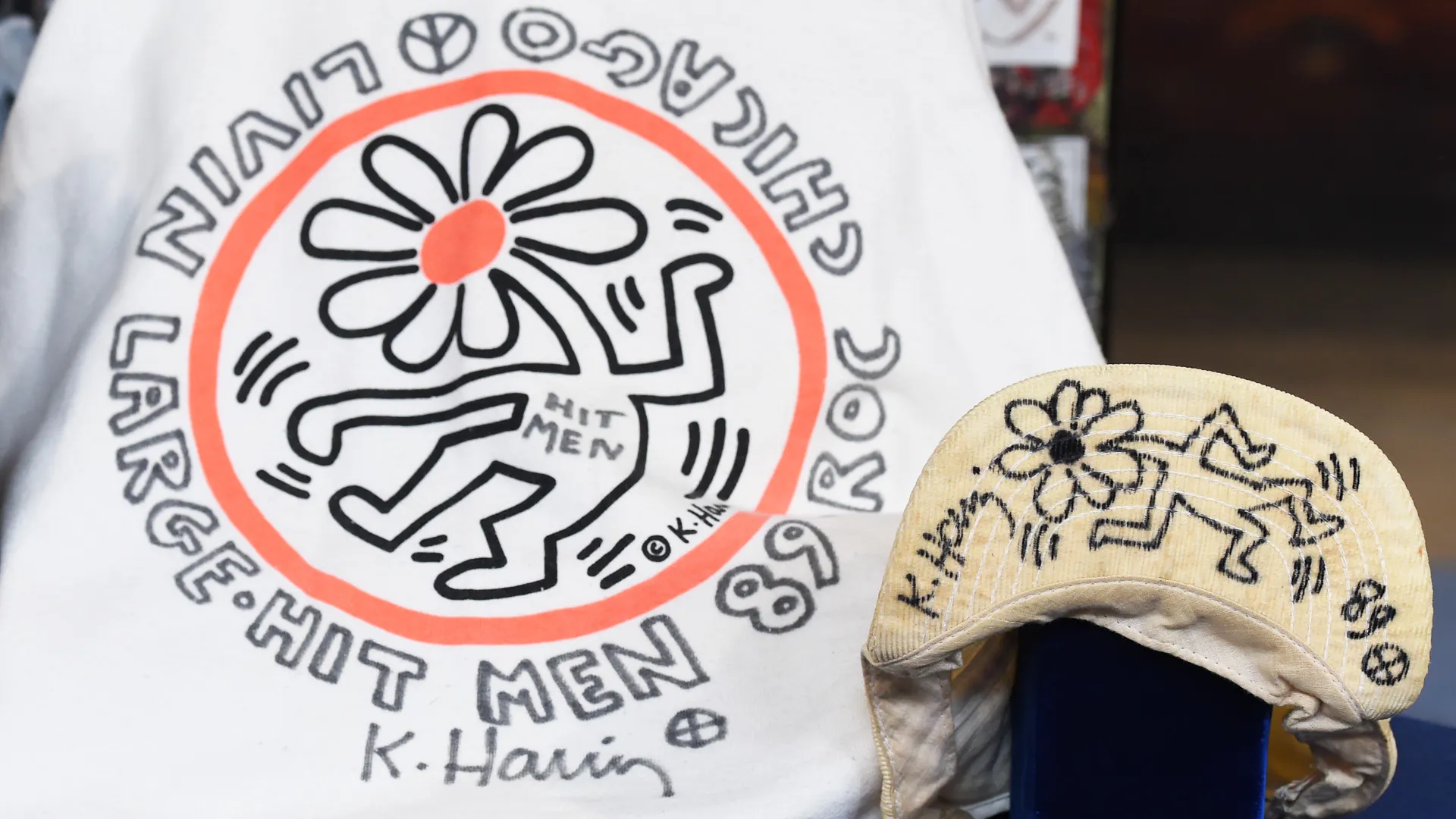APPRAISER: How did you come to know Keith Haring?
GUEST: Well, I was coming from the Art Academy, going to the art expo here in Chicago. I already had known about him, but I ran into him doing a mural project here in Grant Park and we stopped to talk some, and the next thing you know, we're helping out with this mural project that took place here.
APPRAISER: And in that time, you had him over for dinner?
GUEST: Towards the end of the week, yeah, we invited him over to dinner, there in northwest Indiana. Had tamales with my mom and dad and sisters and he met the whole family, it was cool.
APPRAISER: Nice. He was a pretty famous guy by 1989.
GUEST: Yes, he actually passed away in 1990, so...
APPRAISER: Right. This was probably at the climax of his career.
GUEST: Yes. He had AIDS.
APPRAISER: Was he very sick when he was here?
GUEST: When I met him, he didn't seem that sick. He was very active, you know? I didn't see him slowing down at all, you know? I didn't see it coming.
APPRAISER: So, tell me about this book.
GUEST: This is a black book that graffiti writers keep, keep other signatures from graffiti writers and keep some of your own pieces in. And this is a piece that he did for me in my book. Personally inscribed it to me, to "OMS ONE."
APPRAISER: That's your tag name?
GUEST: That's my tag name. The photograph was taken in front of the mural that was taking place at the time for the Art Against AIDS Foundation. I think it was in collaboration also with the MCA, Museum of Contemporary Art. That's myself, my brother, Keith in the middle.
APPRAISER: Then there's this very interesting object here.
GUEST: Yes.
APPRAISER: What is this?
GUEST: That's a history. Started in 1987, and in 1989 when we met him, he came to our house and placed this drawing here in the center while we had him over for dinner.
APPRAISER: What are all the other tags and... signatures?
GUEST: The other tags are just graffiti writers' tags from the area where I live, northwest Indiana, and some Chicago writers also.
APPRAISER: So, any time they'd visit you, you would have them sign this tabletop?
GUEST: Right, we sit around and congregate and plan our next hit. That's why we're called the Hit Men.
APPRAISER: Keith gave you this hoodie.
GUEST: Yeah, that was given to me by Keith and also signed by him.
APPRAISER: So it's signed by him, and he inscribes it "Hit Men," which was the name of your crew.
GUEST: Correct, that was the name of the crew at the time. "Hit Men Bombing Crew." The hat was also another item that was done by Keith Haring. It's from the Chicago Improv.
APPRAISER: Keith was raised in Kutztown, Pennsylvania. He came to New York after studying in Pittsburgh for a period of time, came to New York and studied at the School of Visual Arts. He was a little bit more commercially minded than many of the graffiti artists, and in the late 1980s, he opened his own pop shop.
GUEST: Right.
APPRAISER: And I would think that the hoodie came from the pop shop. The market for Keith Haring is very interesting. Because the Foundation no longer authenticates, it's really important to have an undisputed line of provenance, and nothing could be clearer than the photograph of Keith with you and your brother and crew, the inscription to you, the hoodie, the hat, and of course, this fascinating document.
GUEST: Right.
APPRAISER: The value for a Haring drawing in the retail market would be about $10,000.
GUEST: Wow.
APPRAISER: Hoodies have come on the market and sold at auction for about $1,800.
GUEST: Okay.
APPRAISER: The hat we have no comparables for, but I would expect that would be about $1,000 as well.
GUEST: Wow.
APPRAISER: And the linoleum we have absolutely no comparables for. I think you're talking about $2,000 for the linoleum.
GUEST: Wow.
APPRAISER: So the total value of the collection as a whole is $14,800.
GUEST: (laughs) That is great to hear. I like that.

